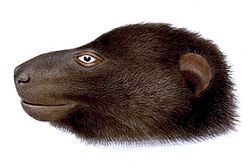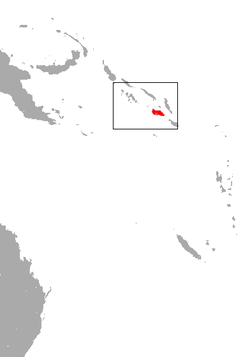Description
It weighs 438–506 g (0.966–1.116 lb). [5] It has thick and fluffy fur that almost entirely conceals their ears. Ears are small, round, and sparsely furred. [4] Ears are 19.5 mm (0.77 in) long and 17 mm (0.67 in) wide. [6] Like all members of its genus, its iris is red. [5] Its color is mostly black, [4] though its wings are occasionally mottled white., [5] [4] Individual hairs on its back are 12–14 mm (0.47–0.55 in) long. Its wings attach at the spine, unlike many species of bats where wing attachment is more lateral. [5] It has very large upper incisors and thick upper canines. [4] Uniquely, its upper canine is double-cusped. It lacks a tail. [5] Its forearm is approximately 143 mm (5.6 in). [4] Its hind foot is 43 mm (1.7 in) long, and its calcar is 18.5 mm (0.73 in) long. [6] From nose to tail, it is 240 mm (9.4 in). [4] It has an unusually high sagittal crest. Its dental formula is 2.1.3.22.1.3.3, for a total of 34 teeth. [6]
This page is based on this
Wikipedia article Text is available under the
CC BY-SA 4.0 license; additional terms may apply.
Images, videos and audio are available under their respective licenses.


